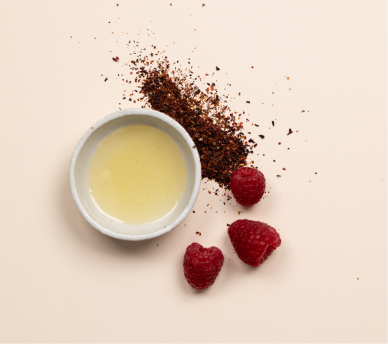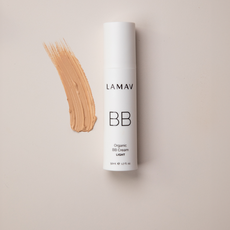Eczema, the elusive skin condition that affects millions of people worldwide, is a complicated condition that can be confusing to identify and treat. Correct identification, the right skincare routine and seeking professional help are a few steps in the right direction to calmer, clearer skin.
Recognising the Signs of Eczema
Eczema can quickly change the look and feel of the skin and manifests differently in each individual. Some of the most noticeable symptoms include rash-like dry patches of skin that are often itchy and can become red and swollen if left untreated. Typically found in the creases of elbows, behind knees and around the wrist and ankle area, eczema can erupt on various areas of the body. This can also include the face, such as around the eyelids and in infants it can even show itself on the cheek, neck and scalp areas.
Types of Eczema
If eczema wasn’t complicated enough to identify and treat, there’s actually up to 7 different types of eczema - the most common being atopic dermatitis. Atopic dermatitis commonly develops early in life but can arise at any age. Characterised by dry, itchy skin, it appears red in people with lighter skin tones and brown or grey in people with darker skin tones.
The cause of atopic dermatitis can be difficult to pinpoint in each individual as there are many variables to consider, including genetics, the immune system and environmental triggers.
Other types of eczema include:
Seborrheic Dermatitis - often develops in areas of the body that produce more oil such as the scalp, upper back and nose. Cradle cap in babies is a type of seborrheic dermatitis.
Contact Dermatitis - a rash develops when your skin comes into contact with an irritant
Neurodermatitis - generally manifests as one or two itchy patches that that escalate in itchiness.
Stasis Dermatitis - usually caused by poor circulation in the lower leg area, swelling, redness and dry skin can develop around the ankle and lower leg area.
Nummular eczema - irritated patches of skin that can become oozy and treatment is often required to avoid infection.
Dyshidrotic Eczema - often characterised by itchy skin on the palms of the hands and soles of the feet that can lead to blistering.
Is it a Rash or is it Eczema? How to tell the difference.
Both a rash and Eczema can cause itchy, red and irritated skin so it can be confusing to identify what you may be experiencing. However, there are a few ways you can differentiate the two.
A rash can be caused by sweat when it becomes trapped by pores or clothing, causing a heat rash. Sweat rashes usually occur on specific body areas such as the armpits or groin. If you’re experiencing a rash on the face it could be rosacea and if you’ve been wearing particular clothing that has irritated the skin this is most likely a rash. Rashes are generally short lived and begin to settle quickly when you take the irritating factor away.
Eczema, on the other hand is a long term condition that requires ongoing treatment and management of triggers and symptoms. It can appear anywhere but most commonly develops in body areas that crease such as behind the knees, elbows, hands, wrists and on the scalp. Eczema is persistent and can escalate to blisters, thickened skin and even bleeding if left untreated.
Eczema Triggers
Just as the cause of eczema can be difficult to pinpoint, so can the triggers that cause flare ups. Certain triggers are known to exacerbate symptoms and can vary greatly from person to person. However, some of the most common include:
- Allergens such as pollen, dust mites and animals
- Topical irritants found in skincare and common household cleaners including chemicals, fragrances, soaps and detergents
- Sudden changes in climate or exposure to extreme temperatures, lower humidity and heat
- Stress
- Irritating materials such as carpet and wool that come into contact with the skin
Eczema Treatment Options
Unfortunately eczema cannot be fully cured, however effective management strategies to help alleviate symptoms can prevent the condition from worsening.Protect your skin’s barrier
Applying moisturiser at least twice per day with a gentle, fragrance free product will restore the skin’s barrier, preventing moisture loss and reducing the risk of dry skin that can lead to irritation and itching. Even when your skin appears calm, it’s important to commit to this regime to maintain healthy skin. Prevention is always best.
As a morning face moisturiser we recommend: LAMAV’s Hyaluronic Moisture Cream thanks to the addition of moisture locking ingredients such as hyaluronic acid. It also contains skin soothers such as aloe vera and sandalwood seed oil to help promote a healthy, fresh and calm complexion.
As a PM face moisturiser we recommend: LAMAV’s Omega 3 Advanced Night Cream. If you’re looking to hydrate and repair your skin, you’ll find it in this booster. Specifically designed to recharge and repair your complexion while you sleep, your skin will enjoy the benefits of hyaluronic acid along with nourishing oils and antioxidant rich extracts to enhance the skin’s repairing action.
Wet Wrapping
Regular wet wrapping using medical dressings can help to lock in hydration when applied over moisturiser and offer soothing relief during flare ups.
Gentle Cleansing
Using mild, fragrance free shampoo, facial cleanser and body wash will help to prevent flare ups. And don’t forget to use lukewarm water, as hot water can inflame and dry the skin.
Magnesium
Magnesium is a naturally occurring mineral, commonly harvested from saltwater lakes using a process known as solar evaporation. A cofactor for more than 300 enzymatic reactions in the body, magnesium has been shown to reduce inflammatory-markers, improve sleep quality and decrease pain and swelling, making it an ideal ingestible and topical supplement for those suffering with eczema.
We recommend: LAMAV’s Gradual Tanning Moisturiser. This rich, gradual tanner contains a nourishing blend of Argan Oil, Macadamia Oil and Green Tea Extract to instantly hydrate skin and is enriched with bio-active Magnesium to promote a sense of relaxation, contribute to overall well-being and support skin's collagen production.
Avoid potential triggers
If you still haven’t figured out what your exact triggers are it’s best to minimise exposure to the most common skin irritants such as overheating, dust, pollen, fragrance, and animals.
Patch testing
Prior to using new beauty products, patch testing is always a good idea. It’s also important to introduce products slowly and one at a time to keep track of which products may be causing potential irritation. Apply a small amount of product to the inside of your arm or forearm. Keep the area dry for 12-24 hours if possible and rinse after the testing time. If any sign of irritation occurs do not use the product.
Treat flare ups as soon as you notice them
If you’re someone who suffers from regular eczema flare ups it’s important to see your doctor or dermatologist to create an action plan and have prescription creams ready to use at the first sign of a flare up. You can also control itching by using antihistamines (as recommended by your doctor) and cold compress to soothe affected areas.
A daily dose of Vitamin D
Some studies have shown that people with eczema may be deficient in Vitamin D and can benefit from a small amount of sun exposure each day along with supplements as directed by your health practitioner. However, there’s a fine line between a healthy dose of sunlight and too much sun that can cause sensitive eczema prone skin to overheat and become inflamed. Just be sure to slip, slop, slap and seek shade at the first sign of overheating.
A healthy, stress-free lifestyle
We all understand the overall health and wellbeing benefits of a balanced and healthy lifestyle, however this is particularly true for eczema sufferers. Keeping your gut healthy and minimising stress can reduce inflammation in the body, helping to keep your skin calm and balanced.
Seek Support
For individuals struggling to manage eczema, seeking professional help is essential. Dermatologists and allergists can provide personalised treatment plans tailored to your needs and help to take a lot of the guesswork out of your condition triggers and the best treatment for your individual needs.











